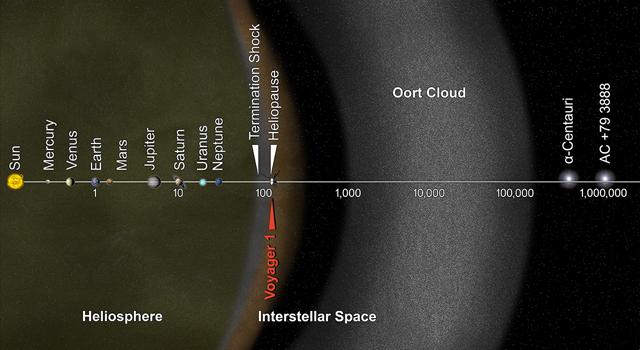Timberlake: Voyager achievement just the first step
In 40,000 years, NASA’s Voyager 1 spacecraft will be closer to another star than it will be to our sun — and that’s just halfway.
September 17, 2013
In 40,000 years, NASA’s Voyager 1 spacecraft will be closer to another star than it will be to our sun — and that’s just halfway. Gliese 445 is the lucky star system Voyager 1 is heading toward, albeit the system is actually traveling toward Voyager 1 faster than than the spacecraft is moving toward it.
This system is about 17.5 light-years from Earth. That means it takes 17.5 years for a beam of light from Gliese 445 to get to Earth traveling at 186,000 miles per second. In space terms, this is just a stone’s throw of a distance. Alpha Centauri is the closest star system to ours at 4.37 light-years away. Traveling at 38,000 miles per hour, it would take Voyager 1 about 77,000 years to reach Alpha Centauri.
NASA has officially announced that Voyager 1 has left our solar system and entered interstellar space. This is a landmark in human achievement, for now we have walked out of our front door and ventured into the unknown.
As the fastest human-made vehicle ever created, it took Voyager 1 nearly 40 years to leave our solar system after being launched in 1977 with computers that can hold only 69.63 kilobytes of data. Its systems are dying from dwindling power and will be operable only until about 2025. In an effort to save power, Voyager 1’s camera was shut down in 1990 after capturing the famous “Pale Blue Dot” photograph.
It now takes just more than 17 hours for a transmission from Voyager 1 to reach Earth. In other words, leaving Earth at the speed of light would mean we would just be leaving our solar system 17 hours later. Alpha Centauri would be 4.37 years away if we were traveling at the speed of light.
I don’t suspect we will be taking manned spacecraft too far from home any time soon. But, and this is a big but, we must try.
With current technology, it would take us nine months to get to Mars from Earth and another around nine months to get back. However, because of the way we must rely on planetary motion to get to and from other orbiting bodies, we could either stay on Mars for only a couple days or be stuck there for 27 months.
Is a year and half round trip in a cramped ship not much bigger than an apartment worth the few days spent on Mars? It’s either that or spend more than two years on Mars on a base that in all likelihood would be the size of a small house. It would have to be stocked with more than two years worth of food, water, air and enough entertainment to keep a crew from going crazy. Try locking yourself in your apartment without Internet or cable for a grand total of three years and eight months.
Space is very lonely. The planets in our neighborhood that have been discovered to sustain life potentially are anywhere from 20 to 600 light-years away.
Venturing in space gives us commercial profitability, it gives us scientific advances, and it quenches the human craving of curiosity. But that isn’t what is important about pushing our bounds as a space-faring species. Astronaut John Young sums it up well:
“Knowing what we know now, we are being irresponsible in our failure to make the scientific and technical progress we will need for protecting our newly discovered, severely threatened and probably endangered species — us. NASA is not about the ‘Adventure of Human Space Exploration’; we are in the deadly serious business of saving the species. All Human Exploration’s bottom line is about preserving our species over the long haul.”
Even though it may take many generations over to reach other planets, it very well is in our best interest. I’ll leave you with one more quote, from Stephen Hawking:
“Our population and our use of the finite resources of planet Earth are growing exponentially, along with our technical ability to change the environment for good or ill. But our genetic code still carries the selfish and aggressive instincts that were of survival advantage in the past. It will be difficult enough to avoid disaster in the next hundred years, let alone the next thousand or million. Our only chance of long-term survival is not to remain inward looking on planet Earth but to spread out into space.”







